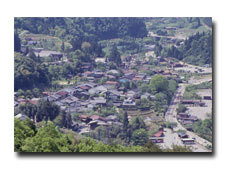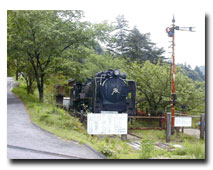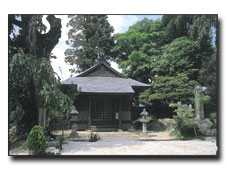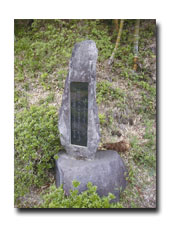The origin of this kannon is in a historic event when Yoshinaka Kiso (Lord of Kiso, 1154 - 1184), who built a fort in Tsumago, placed his Kabuto Kannon statue in front of the fort gate when he left to join a battle on the Hokuriku road.
The vegetation of the environment is diverse, including camellias and crape myrtle. The weeping plums are in full bloom from late March through early April.
Nearby stood a tall red pine, which symbolized the romance of the renowned historical figures, Yoshinaka and Tomoe. Unfortunately, it was damaged by a typhoon. The tree was built into a water boat and is now on display.
|












